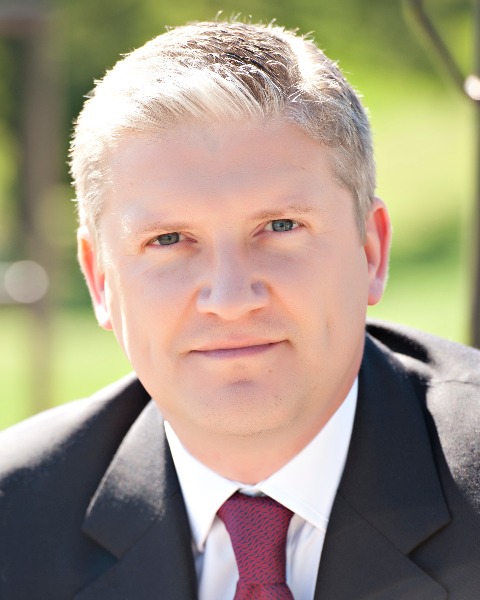Electrophysiology
POSTER SESSION #3
P134 - STEREOTACTIC RADIOABLATION OR ESCALATING DRUG THERAPY FOR RECURRENT VT: MID TERM OUTCOMES
Saturday, October 25, 2025
12:30pm - 1:30pm ET
Location: Board 97

Calum Redpath, MBChB MRCP (UK) PhD
Staff EP
University of Ottawa Heart Institute
Ottawa, Ontario, Canada
Presenting Author(s)
Background: Patients suffering recurrent defibrillator (ICD) shocks for Ventricular Tachycardia (VT) despite anti-arrhythmic drugs (AAD) who are unable or unwilling to undergo catheter ablation (CA) have limited options and remain at high risk of further shocks and death.
METHODS AND RESULTS: We offered completely non-invasive stereotactic radioablation (RA) consisting of a single fraction of 25 Gy delivered as an out patient. Patients were referred to the RA programme if they had previously undergone CA or if they were unable to receive CA (e.g.LV thrombus). No patient referred to the programme was declined RA for any reason and all were entered into a prospective registry. We describe outcomes in all patients with a minimum of three months follow up (n=30 patients who accepted RA and n= 13 patients who declined RA).
Mean age of all patients was 69 years, 88% were male and the aetiology was Ischaemic cardiomyopathy (ICM) in 74%. All patients who agreed to RA received RA. Patients who declined RA were treated with escalating doses of AADs. No blanking period was observed.
Patients accepting RA were younger with poorer EF, more VT but similar comorbidity scores (see Table 1). At one year 3 patients (25%) declining RA were alive and free from recurrent shocks versus 15 patients (75%) who received RA. VT burden was not appreciably reduced by AADs but RA was associated with > 90% reduction in both ATP and shock therapies at one year. Freedom from shock or death at two years following RA was 50% (10 patients) and 40% (8 patients) at three years. Five patients who had recurrent shocks underwent repeat ablation (3 CA and 2 RA) for slower VT with no apparent complications and remain alive at 3 years post index RA. Two of the four patients who initially declined RA and were alive at 3 years accepted RA following recurrent shocks. Of the 30 patients who underwent RA with >3 months follow up adverse events (Grade 3) were observed in 2 patients (7%). No significant deleterious effects on ejection fraction, valve function or ICD performance were observed in any patient treated with RA thus far.
Conclusion: RA appears safe and effective for patients with recurrent VT at high risk of recurrent shocks or death at ≤3 years of follow up. Randomised studies of RA are needed to confirm these results.
METHODS AND RESULTS: We offered completely non-invasive stereotactic radioablation (RA) consisting of a single fraction of 25 Gy delivered as an out patient. Patients were referred to the RA programme if they had previously undergone CA or if they were unable to receive CA (e.g.LV thrombus). No patient referred to the programme was declined RA for any reason and all were entered into a prospective registry. We describe outcomes in all patients with a minimum of three months follow up (n=30 patients who accepted RA and n= 13 patients who declined RA).
Mean age of all patients was 69 years, 88% were male and the aetiology was Ischaemic cardiomyopathy (ICM) in 74%. All patients who agreed to RA received RA. Patients who declined RA were treated with escalating doses of AADs. No blanking period was observed.
Patients accepting RA were younger with poorer EF, more VT but similar comorbidity scores (see Table 1). At one year 3 patients (25%) declining RA were alive and free from recurrent shocks versus 15 patients (75%) who received RA. VT burden was not appreciably reduced by AADs but RA was associated with > 90% reduction in both ATP and shock therapies at one year. Freedom from shock or death at two years following RA was 50% (10 patients) and 40% (8 patients) at three years. Five patients who had recurrent shocks underwent repeat ablation (3 CA and 2 RA) for slower VT with no apparent complications and remain alive at 3 years post index RA. Two of the four patients who initially declined RA and were alive at 3 years accepted RA following recurrent shocks. Of the 30 patients who underwent RA with >3 months follow up adverse events (Grade 3) were observed in 2 patients (7%). No significant deleterious effects on ejection fraction, valve function or ICD performance were observed in any patient treated with RA thus far.
Conclusion: RA appears safe and effective for patients with recurrent VT at high risk of recurrent shocks or death at ≤3 years of follow up. Randomised studies of RA are needed to confirm these results.
